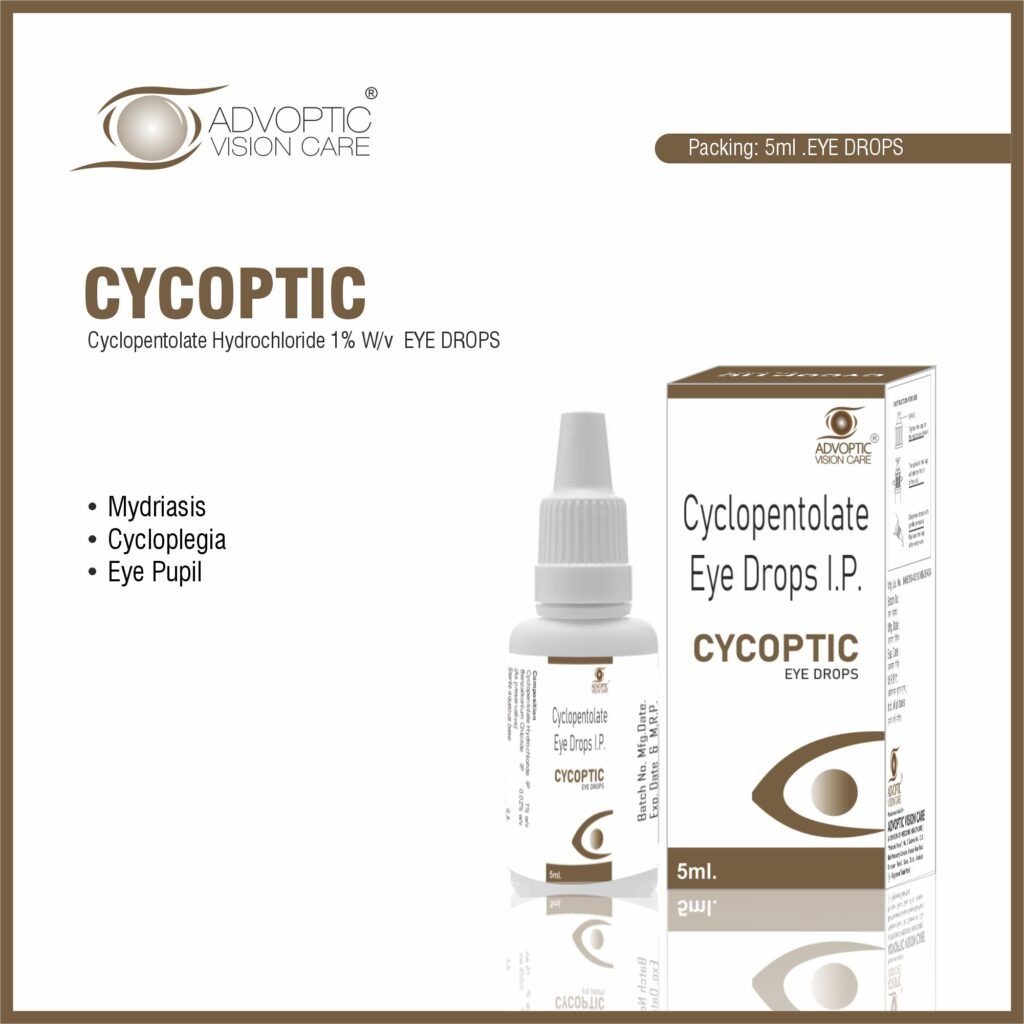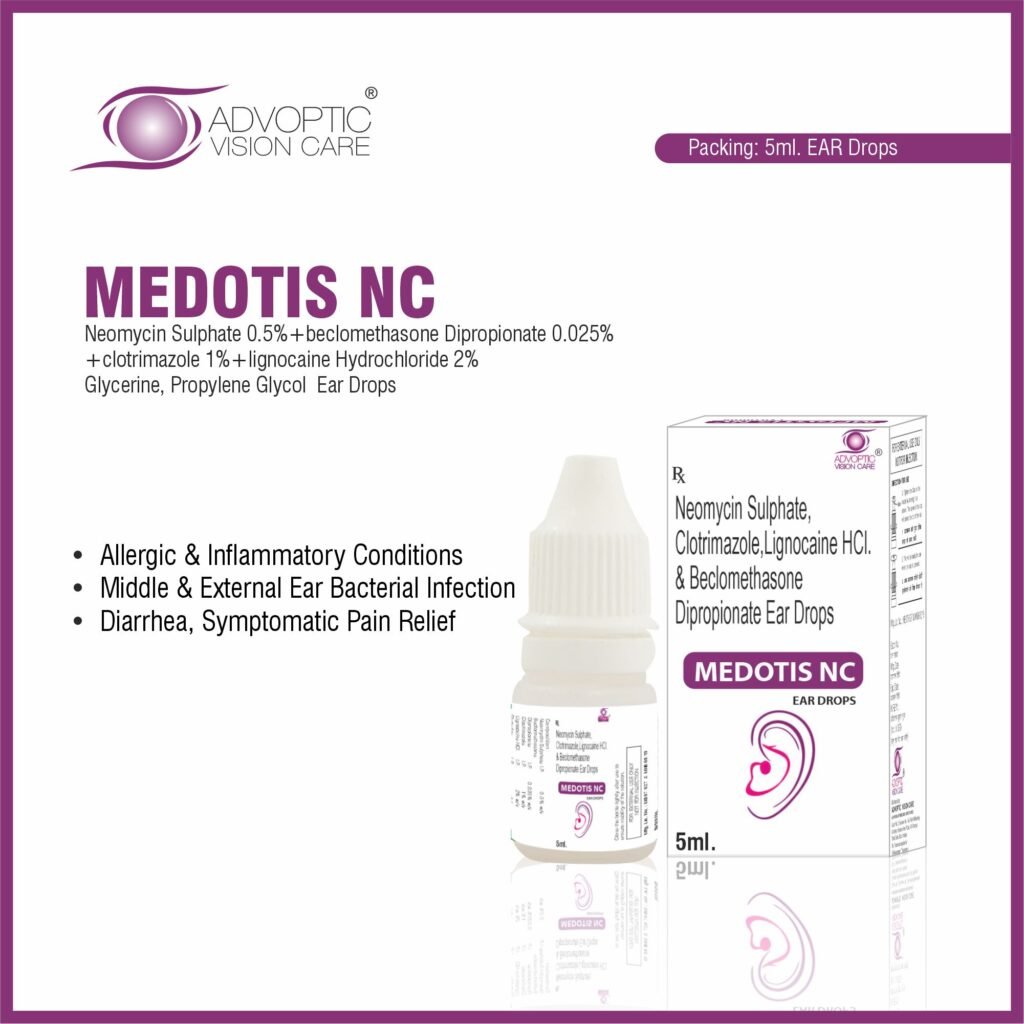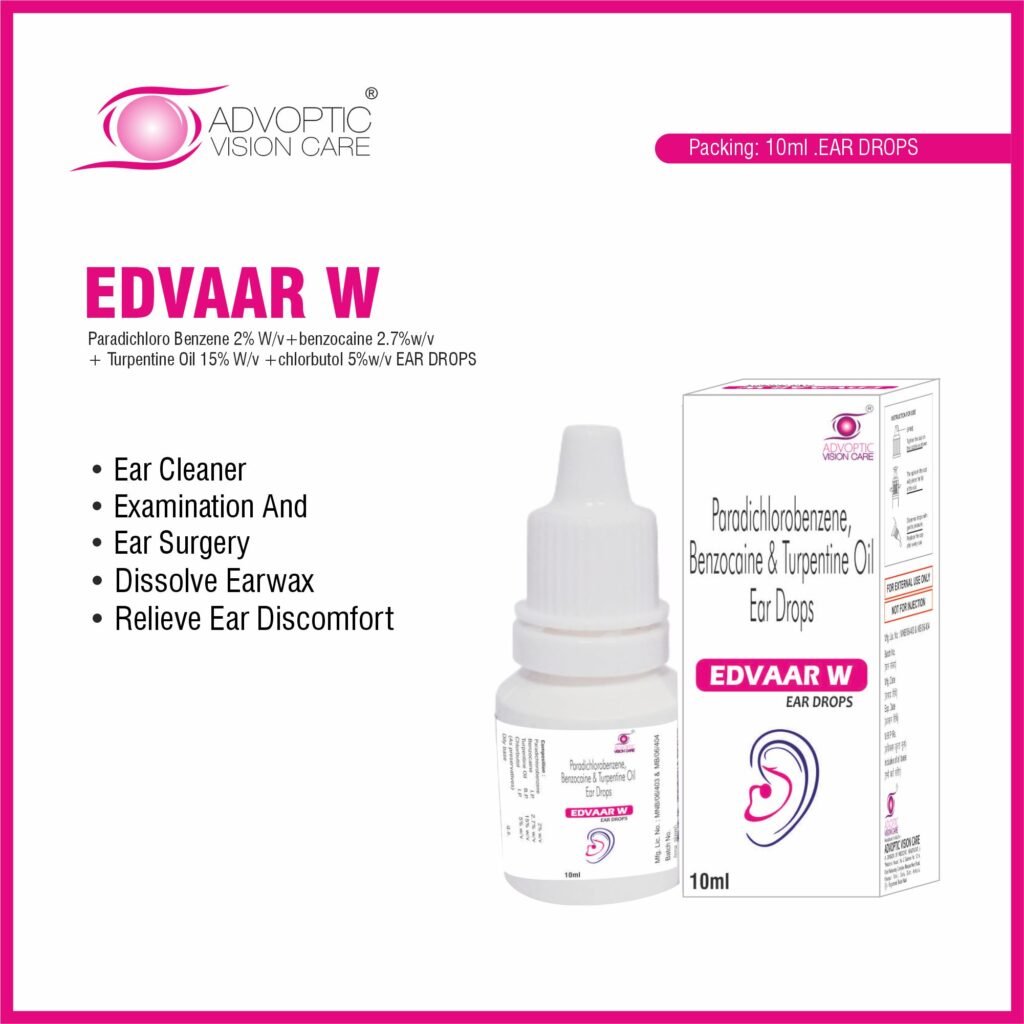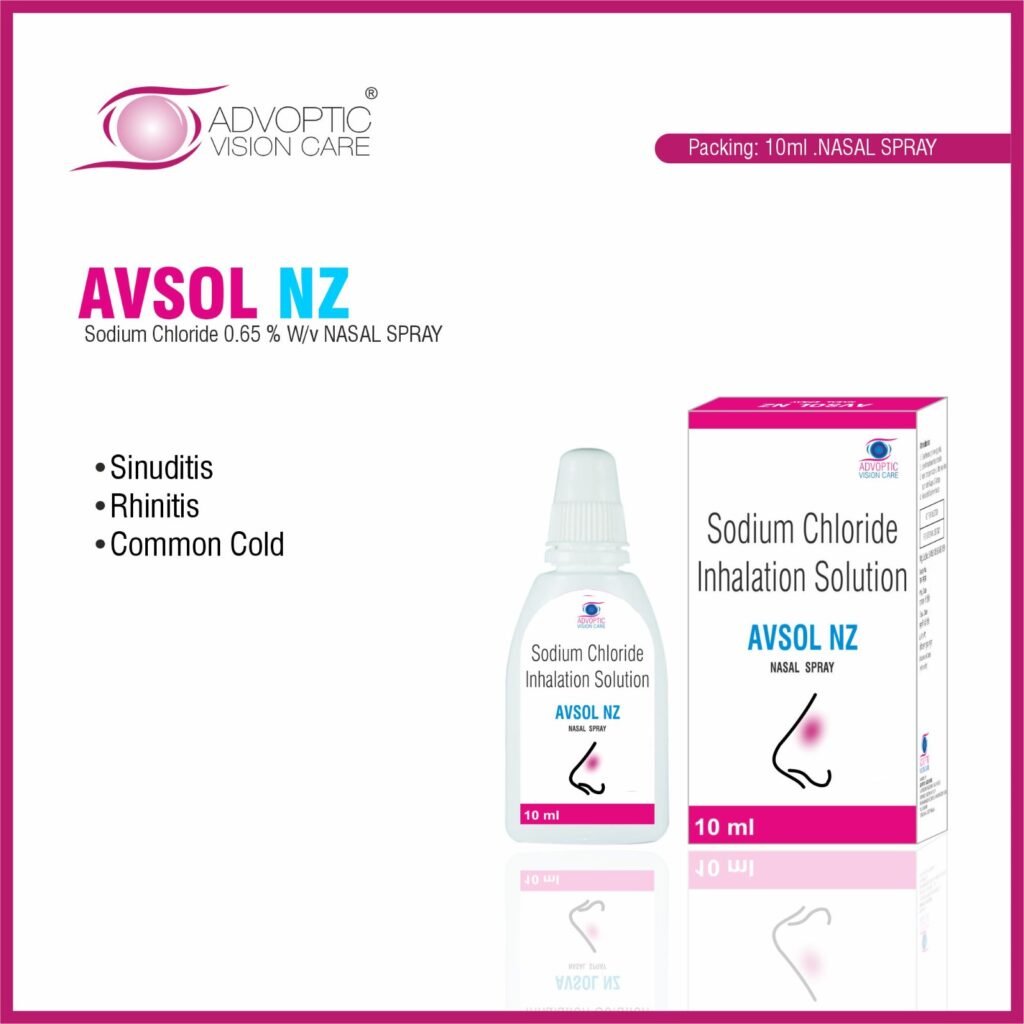Oxymetazoline Hydrochloride 0.05% Nasal Solution: Uses, Side Effects, & Warnings
Nasal congestion can be incredibly uncomfortable, often leading to difficulty breathing, headaches, and disturbed sleep. One common solution to this issue is Oxymetazoline Hydrochloride 0.05% Nasal Solution, marketed by Advoptic Vision Care under XYLOTIC OXY P. This nasal decongestant is a popular remedy for temporary relief from congestion caused by colds, allergies, and sinusitis. In this blog, we’ll explore the uses, potential side effects, and warnings associated with this medication, along with a discussion on our ophthalmic PCD pharma franchise opportunities.
What is Oxymetazoline Hydrochloride 0.05% Nasal Solution?
Oxymetazoline Hydrochloride 0.05% Nasal Solution is a medication used in nasal sprays that acts as a decongestant. It works by constricting blood vessels in the nasal passages, reducing swelling, and making it easier to breathe. It is primarily used to alleviate symptoms of nasal congestion caused by the common cold, hay fever, or other upper respiratory allergies.
Key Uses of Oxymetazoline Hydrochloride 0.05% Nasal Solution
Nasal Congestion Relief: Oxymetazoline is highly effective in treating nasal congestion due to colds or allergies. The constriction of blood vessels reduces nasal swelling, leading to easier airflow through the nasal passages.
Sinus Pressure Alleviation: The solution helps reduce sinus pressure, a common symptom of sinusitis, giving patients relief from headaches and facial pain associated with sinus blockages.
Cold-Related Congestion: For those experiencing stuffy noses from colds or flu, XYLOTIC OXY P can offer immediate relief, helping improve overall comfort and enabling better sleep.
Allergic Rhinitis: People suffering from seasonal or year-round allergies can find relief from nasal stuffiness by using this nasal spray. It provides temporary respite from allergy symptoms like sneezing and runny nose.
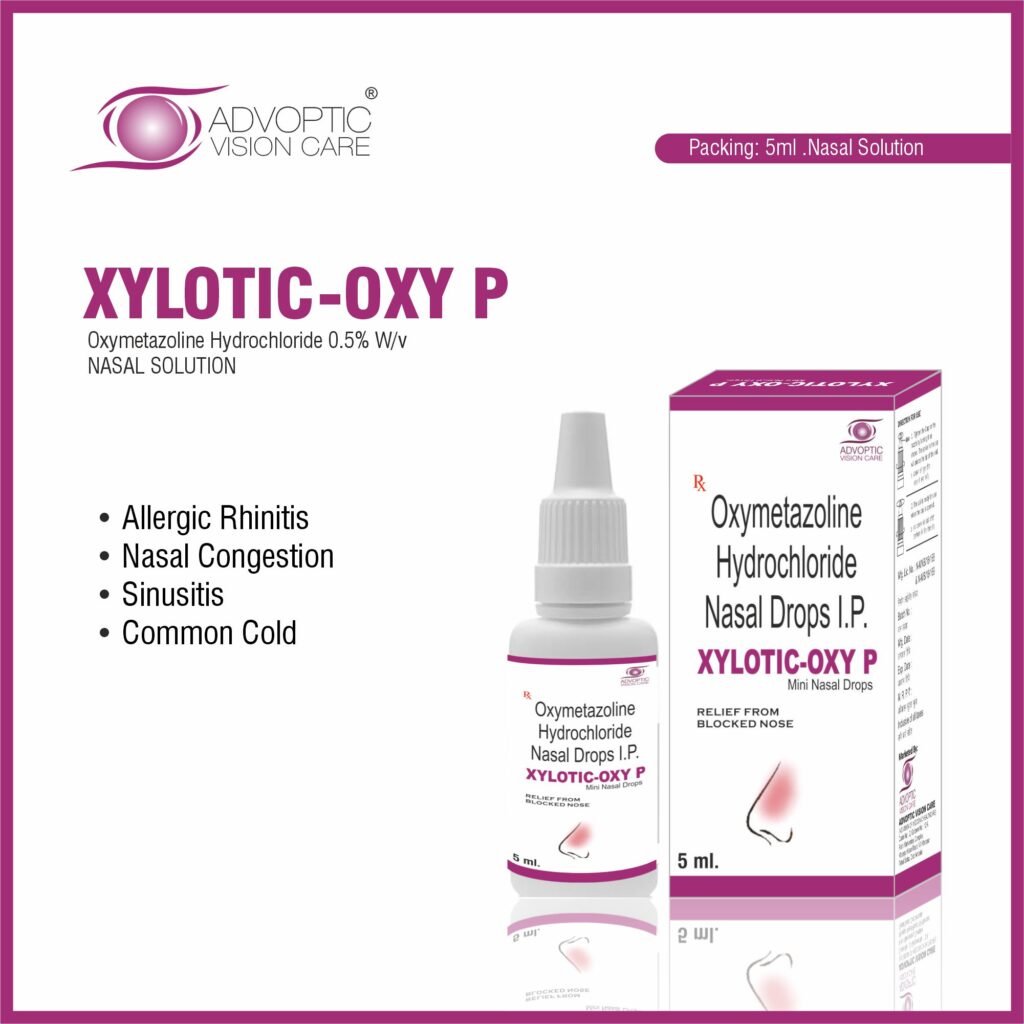
How to Use Oxymetazoline Hydrochloride 0.05% Nasal Solution
Using XYLOTIC OXY P correctly is crucial for maximizing its benefits and avoiding potential side effects. Here’s a step-by-step guide:
Step 1: Blow your nose gently to clear your nasal passages.
Step 2: Shake the bottle well before each use.
Step 3: Tilt your head slightly forward.
Step 4: Insert the spray nozzle into one nostril while gently closing the other.
Step 5: Press the pump to spray while inhaling deeply through your nose.
Step 6: Repeat the process for the other nostril.
For best results, use as directed by a healthcare professional. Do not exceed the recommended dosage or frequency of use (typically two or three times a day for no more than three consecutive days).
Potential Side Effects of Oxymetazoline Hydrochloride 0.05% Nasal Solution
Although XYLOTIC OXY P is generally safe when used as directed, some individuals may experience side effects. Here are a few to be aware of:
Nasal Dryness or Irritation: Prolonged use of oxymetazoline can cause the nasal membranes to dry out or become irritated. Symptoms may include burning, stinging, or dryness in the nose.
Rebound Congestion: One of the most common side effects associated with overuse of oxymetazoline is rebound congestion. This occurs when the nasal spray is used for more than the recommended 3-4 days, causing the nasal passages to become even more congested after stopping its use.
Sneezing: Some people may experience increased sneezing immediately after using the nasal spray, although this side effect typically subsides.
Headaches: A small percentage of users report headaches as a side effect, although this is rare.
Increased Blood Pressure: Since oxymetazoline works by constricting blood vessels, it can potentially raise blood pressure. People with a history of hypertension should consult their doctor before using this product.
Warnings & Precautions
While XYLOTIC OXY P is effective, it is important to adhere to safety guidelines to minimize risks. Here are some important precautions:
Avoid Long-Term Use: Oxymetazoline nasal solutions are not intended for long-term use. Rebound congestion is a significant risk if used beyond three consecutive days.
Consult Your Doctor: If you have underlying health conditions like heart disease, high blood pressure, diabetes, or thyroid problems, consult a healthcare provider before using this medication.
Pregnancy & Breastfeeding: If you are pregnant or breastfeeding, talk to your doctor before using XYLOTIC OXY P to ensure it is safe for you and your baby.
Medication Interactions: Oxymetazoline may interact with other medications, especially those used to treat high blood pressure, heart disease, or depression. Always inform your healthcare provider about any other drugs you are taking.
Why Choose XYLOTIC OXY P from Advoptic Vision Care?
At Advoptic Vision Care, we pride ourselves on delivering high-quality products to improve your health and well-being. XYLOTIC OXY P is designed to offer fast and effective relief from nasal congestion, making it a valuable addition to your medicine cabinet. We adhere to the highest standards in pharmaceutical manufacturing to ensure that our customers receive safe and reliable products.
Ophthalmic PCD Pharma Franchise with Advoptic Vision Care
If you’re a healthcare professional, MR, or wholesaler looking to expand your business, Advoptic Vision Care is offering Ophthalmic PCD Pharma Franchise opportunities. Our wide range of products, including XYLOTIC OXY P, ensures that you have access to top-quality, in-demand healthcare solutions. By partnering with us, you gain exclusive rights to market and distribute our products in your area, supported by comprehensive marketing materials and training.
Conclusion
XYLOTIC OXY P is an effective, fast-acting solution for nasal congestion. However, like all medications, it should be used responsibly, and users should be aware of potential side effects and warnings. If you’re interested in learning more about Oxymetazoline Hydrochloride 0.05% Nasal Solution, or if you want to explore PCD pharma franchise opportunities with Advoptic Vision Care, get in touch today.
Frequently Asked Questions
1. How often can I use Oxymetazoline Hydrochloride 0.05% Nasal Solution?
The recommended usage is twice or thrice a day. Do not use it more frequently or for longer than 3 days to avoid rebound congestion.
2. Can I use this nasal spray if I have allergies?
Yes, it is effective in providing temporary relief from nasal congestion caused by allergies. However, you should use it for a limited time to avoid dependency.
3. What should I do if I experience rebound congestion?
If you experience rebound congestion, discontinue the nasal spray and consult your healthcare provider for alternative treatments or solutions.
4. Can children use this product?
This product is generally not recommended for children under the age of 6. Always consult a paediatrician before administering any nasal decongestant to a child.
Contact Details:
Name: Advoptic Vision Care
Mobile No: +91 7889021290 +91 94160 21934
Email: advopticvision@gmail.com
Address: Plot No.176 2nd Floor, Industrial Area Phase 1, Panchkula, Haryana 134113



